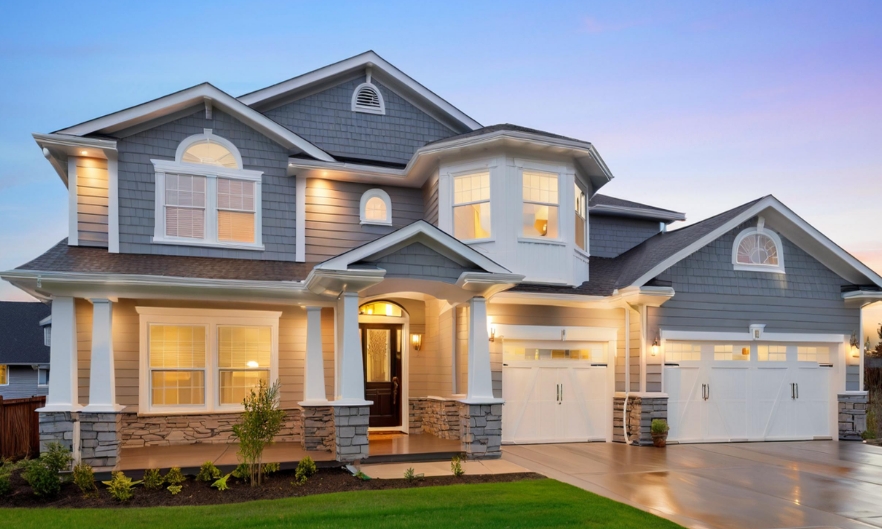Why Are Light Steel Structure Villas Gaining Popularity in Earthquake-Prone Regions?
Core reasons for the popularity of light steel villas in earthquake-prone areas
light steel frame houses are becoming the preferred solution for residential construction in earthquake zones through technological innovation, policy support and matching of disaster preparedness needs.

I. Excellent anti-seismic performance
Lightweight structure reduces earthquake destructive force
The self-weight of lightweight steel villa is only 1/4-1/2 of the traditional brick-concrete structure, and the inertia force endured in the earthquake is significantly reduced, which reduces the probability of structural damage.
Ductile structure disperses seismic energy
Through the box structure formed by light steel keel and the skin effect, the lateral impact of earthquake can be transformed into structural elastic deformation to avoid brittle fracture. Take Handan area as an example, the light steel villa can withstand an earthquake of magnitude 9, and the risk of collapse is more than 80% lower than that of traditional buildings.
High-precision connection technology guarantees integrity
Galvanized bolts are used to connect with pre-buried parts, and the node strength is 1.5 times higher than that of traditional welding, which ensures that the building maintains its integrity during earthquakes.
Seismic grade certification: EU standard light steel villa passes CE certification, the main structure can resist grade 9 earthquake, and its overall frame connection strength is 1.5 times of traditional welding.
Dynamic test data: the ductility of cold-formed thin-walled lightweight steel structure can withstand 3 times the amount of deformation of traditional buildings, the efficiency of seismic energy absorption is increased by more than 60%, and the risk of actual collapse is reduced by 80%.
II. Advantages of rapid construction and post-disaster reconstruction
Prefabrication shortens cycle time
90% of the components are prefabricated in the factory, and the on-site assembly cycle is only 1/3 of that of traditional buildings, which is a significant efficiency advantage in post-disaster emergency resettlement.
No need for complex foundation treatment
Light steel villas require 40% less foundation bearing capacity than brick-concrete, and can be constructed directly on backfill or weak foundation, adapting to the complex geological conditions of the earthquake zone.
III. Material performance and safety redundancy
High-strength steel guarantees stability
The tensile strength of hot-dip galvanized lightweight steel keel reaches 550MPa, which is more than two times that of ordinary steel, and it forms a three-dimensional protection network with the cross-support system.
Fire and moisture resistant to enhance durability
The galvanized layer on the surface of the keel has a corrosion-resistant life of more than 50 years, and the fire-resistant limit of the composite wall reaches 2 hours, which meets the safety norms of high-intensity seismic zones.
IV. Policy and Cost Driven
Government Subsidies Promote Popularization
Local governments in earthquake zones provide subsidies of 150-300 RMB/㎡ for light steel villas (e.g., the subsidy standard of Sichuan Ya'an is 280 RMB/㎡), which reduces the initial investment of users.
Full-cycle cost advantage
Although the initial cost is slightly higher (about 5%-10% higher), the maintenance cost is 30% lower than that of brick-concrete, and the residual value rate of 50-year recycling is more than 60%, so the comprehensive cost performance is better.
V. Successful Cases of Light Steel Structure Villa's Seismic Resistance
Gansu Jishishan Post-Disaster Reconstruction Project
After the earthquake in Jishishan, Gansu in 2024, the local government adopted the light steel villa with the standard of 9 magnitude earthquake resistance to carry out post-disaster reconstruction, realizing that the main body of one hundred households was completed in 7 days after the earthquake, and zero structural damage was reported in 3 years after the occupancy, which verified the reliability of its anti-seismic performance.
Hebei Jingfu earthquake zone practice project
The light steel villa in Jingfu area adopts Q345 galvanized steel bones and skin effect system, which is measured to be able to withstand an earthquake of magnitude 8, and the deformation of the wall is only 1/10 of that of the traditional brick-concrete.20 In the rainstorm season of 2024, the light steel community in the area maintains zero seepage and zero structural damage under the geologically active conditions of strong earthquakes, and it has become the demonstration project for the “safe island”. The project has become a model project of “Safe Island”.
Japan Hanshin earthquake zone: the proportion of lightweight steel villas increased from 12% in 2015 to 38% in 2024, and the post-earthquake damage rate is only 1/6 of that of traditional buildings.


